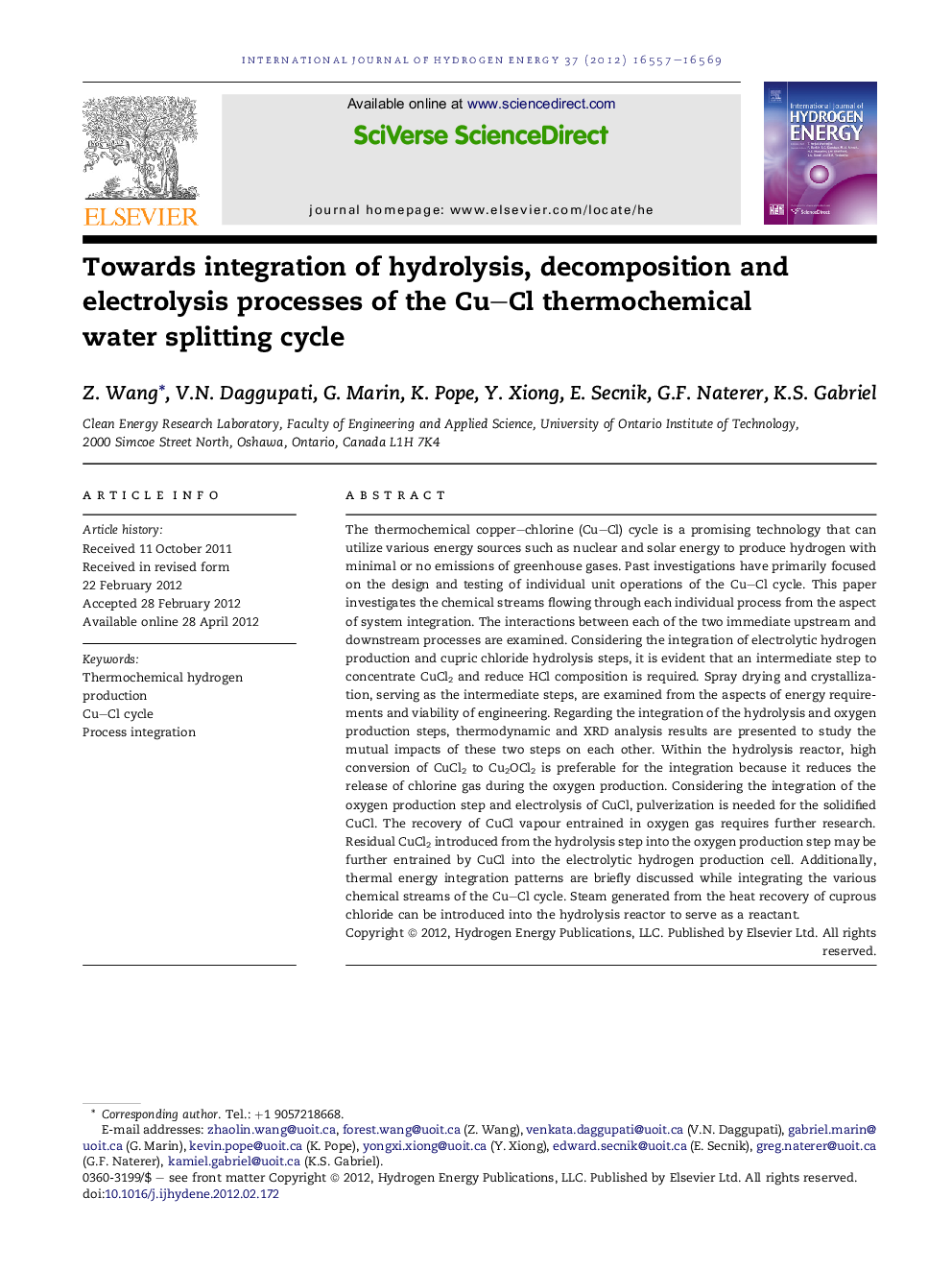| Article ID | Journal | Published Year | Pages | File Type |
|---|---|---|---|---|
| 1282188 | International Journal of Hydrogen Energy | 2012 | 13 Pages |
The thermochemical copper–chlorine (Cu–Cl) cycle is a promising technology that can utilize various energy sources such as nuclear and solar energy to produce hydrogen with minimal or no emissions of greenhouse gases. Past investigations have primarily focused on the design and testing of individual unit operations of the Cu–Cl cycle. This paper investigates the chemical streams flowing through each individual process from the aspect of system integration. The interactions between each of the two immediate upstream and downstream processes are examined. Considering the integration of electrolytic hydrogen production and cupric chloride hydrolysis steps, it is evident that an intermediate step to concentrate CuCl2 and reduce HCl composition is required. Spray drying and crystallization, serving as the intermediate steps, are examined from the aspects of energy requirements and viability of engineering. Regarding the integration of the hydrolysis and oxygen production steps, thermodynamic and XRD analysis results are presented to study the mutual impacts of these two steps on each other. Within the hydrolysis reactor, high conversion of CuCl2 to Cu2OCl2 is preferable for the integration because it reduces the release of chlorine gas during the oxygen production. Considering the integration of the oxygen production step and electrolysis of CuCl, pulverization is needed for the solidified CuCl. The recovery of CuCl vapour entrained in oxygen gas requires further research. Residual CuCl2 introduced from the hydrolysis step into the oxygen production step may be further entrained by CuCl into the electrolytic hydrogen production cell. Additionally, thermal energy integration patterns are briefly discussed while integrating the various chemical streams of the Cu–Cl cycle. Steam generated from the heat recovery of cuprous chloride can be introduced into the hydrolysis reactor to serve as a reactant.
